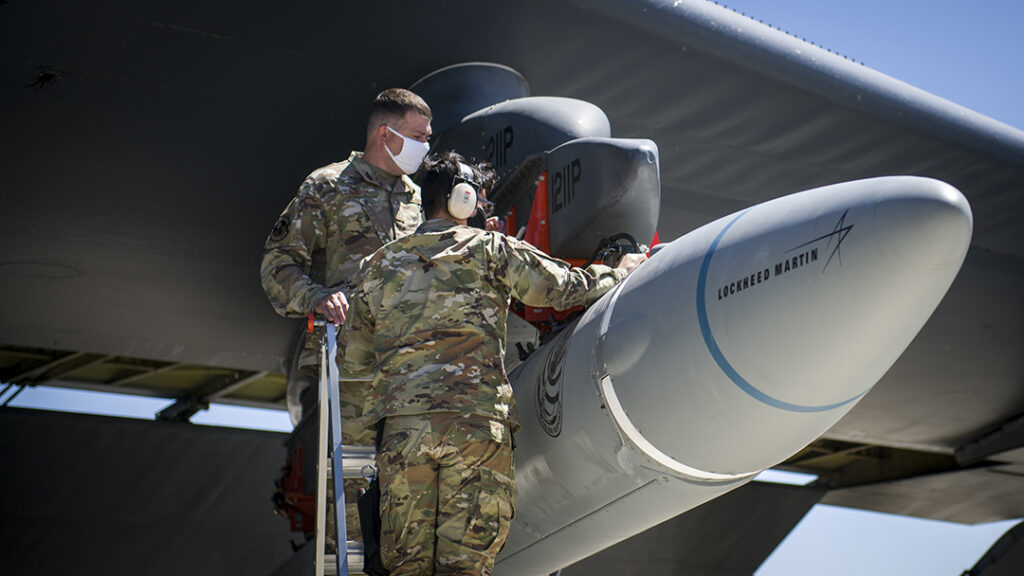THE WATCH STAFF
The U.S. Air Force has let fly with a hypersonic arrow — the Air-launched Rapid Response Weapon (ARRW).
The Air Force’s first successful flight test of the missile May 14, 2022, came after three unsuccessful ones.
During the latest test off the coast of Southern California, the AGM-183A ARRW deployed from the wing of a B-52H Stratofortress, achieved booster ignition, then burned for an “expected duration” while reaching hypersonic speeds,according to a May 16, 2022, Air Force news release.
Hypersonic weapons are highly maneuverable missiles that travel at least five times the speed of sound.
The 419th Flight Test Squadron (FLTS) and the Global Power Bomber Combined Test Force (GPB CTF) from Edwards Air Force Base, California, conducted the ARRW test.
(Pictured: A test version of the ARRW weapon is loaded under the wing of a B-52H Stratofortress at Edwards Air Force Base, California, in 2020.)
“This was a major accomplishment by the ARRW team, for the weapons enterprise, and our Air Force,” Air Force Brig. Gen. Heath Collins, the program executive officer for weapons, said in the news release. “The team’s tenacity, expertise and commitment were key in overcoming the past year’s challenges to get us to the recent success. We are ready to build on what we’ve learned and continue moving hypersonics forward.”
Additional ARRW test flights will continue in 2022 before reaching early operational capability in 2023, according to a May 17 news release from the missile’s developer, Lockheed Martin.
“The test team made sure we executed this test flawlessly,” Lt. Col. Michael Jungquist, 419th FLTS commander and GPB CTF director, said in the Air Force news release. “Our highly skilled team made history on this first air-launched hypersonic weapon. We’re doing everything we can to get this game-changing weapon to the warfighter as soon as possible.”
The successful test came at a crucial time for the ARRW program. The previous tests led the Air Force to cut funds for procurement of the missile from its 2022 and 2023 budget requests, according to a May 16 Air Force Magazine story.
“[We’re] not walking away. It’s funded in FY 23,” Air Force Maj. Gen. James D. Peccia III, deputy assistant secretary for budget, told reporters during the 2023 budget rollout, referring to research funds, according to Air Force Magazine. “And then we’ll make an assessment after that.”
Still, the service shifted most 2023 research funding to the Hypersonic Attack Cruise Missile (HACM), according to Air Force Magazine.
The ARRW is a boost-glide weapon that is launched into the atmosphere and rides a rocket into low-earth orbit, where it detaches and glides unpowered toward its target, while the HACM uses an air-breathing engine, or “scramjet,” for propulsion.
The ARRW is designed to “expand precision-strike capabilities by enabling rapid-response strikes against heavily defended land targets,” according to the Air Force news release.
The military news website Breaking Defense said in a May 17 story that ARRW would also allow the Air Force to extend the life of its current bomber fleet.
“Having a capability like ARRW in the arsenal allows the service to keep older, less-survivable platforms like B-52 at standoff distances,” Breaking Defense wrote, “while still being able to strike at enemies with a weapon that is more difficult to defend against.”
IMAGE CREDIT: GIANCARLO CASEM/U.S. AIR FORCE

